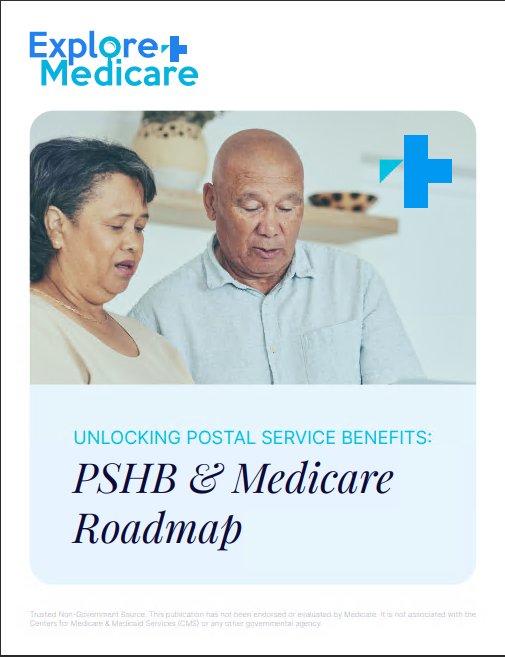Key Takeaways
-
Understanding Medicare’s basics today can save you from unexpected expenses and financial pitfalls down the road.
-
Knowing the timelines and enrollment options ensures you make informed choices that align with your healthcare needs and budget.
Why Medicare Knowledge is Crucial for Your Financial Health
Medicare can feel overwhelming at first glance, but ignoring the details can cost you. Whether you’re nearing 65 or planning for the future, learning how Medicare works now can help you make confident decisions and sidestep costly mistakes. Let’s break it all down so you can take control of your healthcare and your wallet.
Medicare’s Essential Parts: A Quick Overview
Before diving into the nitty-gritty, it’s helpful to understand Medicare’s foundational components. Medicare consists of four main parts:
Part A: Hospital Insurance
This covers inpatient hospital stays, skilled nursing facility care, and some home health services. Most people don’t pay a premium for Part A if they’ve worked at least 10 years and paid Medicare taxes.
Part B: Medical Insurance
Part B covers outpatient care, doctor visits, preventive services, and durable medical equipment. Unlike Part A, you’ll pay a monthly premium for Part B. The standard premium is $185 in 2025, with higher earners paying more.
Part C: Medicare Advantage
These plans combine Parts A and B and often include additional benefits like dental or vision coverage. They’re offered through private insurers, so costs and coverage vary widely.
Part D: Prescription Drug Coverage
Part D helps cover prescription drug costs and includes an annual deductible, which is $590 in 2025. It also features a $2,000 out-of-pocket cap, providing relief for those with high medication expenses.
Avoiding Enrollment Pitfalls
Know Your Initial Enrollment Period (IEP)
The Initial Enrollment Period lasts seven months, starting three months before the month you turn 65, including your birthday month, and ending three months afterward. Missing this window can lead to late enrollment penalties, which stick with you for life.
Watch Out for the General Enrollment Period (GEP)
If you miss your IEP, you can sign up during the General Enrollment Period from January 1 to March 31 each year. However, your coverage won’t start until July, leaving you potentially uninsured for months. You’ll also face penalties that increase the longer you delay.
Consider Special Enrollment Periods (SEP)
If you’re still working and covered by employer insurance, you might qualify for a Special Enrollment Period once your employment or coverage ends. This can help you avoid gaps in coverage and penalties.
The Cost of Ignoring Medicare Deadlines
Failing to enroll on time can hit your wallet hard. Here’s how:
-
Part B Late Enrollment Penalty: For each 12-month period you delay enrolling, your monthly premium increases by 10%, and this penalty lasts for as long as you have Part B.
-
Part D Late Enrollment Penalty: The penalty for Part D is 1% of the national base premium per month you went without coverage, and it’s permanent.
Timely enrollment is essential to keep these costs from piling up over your lifetime.
Coordinating Medicare with Other Coverage
If you’re already covered by employer or union insurance, you’ll need to understand how Medicare interacts with your current plan.
Employer Coverage
For those working at companies with 20 or more employees, your employer’s plan pays first, and Medicare pays second. If your employer has fewer than 20 employees, Medicare becomes the primary payer. This can significantly impact how much you’ll owe out of pocket.
Retiree Insurance
If you have retiree insurance, it typically serves as secondary coverage, paying only after Medicare. You’ll want to check whether it includes prescription drug coverage to avoid needing a standalone Part D plan.
Medigap: Filling the Gaps
Original Medicare doesn’t cover everything, leaving you responsible for deductibles, coinsurance, and copayments. That’s where Medigap plans come in.
What Medigap Covers
Medigap plans, also called Medicare Supplement Insurance, help pay for out-of-pocket costs like:
-
Part A hospital coinsurance and deductibles
-
Part B coinsurance or copayments
-
Foreign travel emergencies
When to Enroll
The best time to buy a Medigap plan is during your six-month Medigap Open Enrollment Period, which starts the month you turn 65 and enroll in Part B. During this period, insurers can’t deny you coverage or charge higher premiums due to pre-existing conditions.
Prescription Costs: Why Part D Matters
Skipping Part D might seem like a money-saver if you don’t currently take medications, but this can backfire later. Without creditable drug coverage, you’ll face a lifelong penalty and high out-of-pocket costs when you eventually need prescriptions.
Plan Selection
Take time to compare Part D plans. Pay attention to formularies, which list covered drugs, as well as copayments, coinsurance, and deductibles.
The $2,000 Cap Advantage
As of 2025, Part D features a $2,000 annual cap on out-of-pocket drug costs. This can provide significant financial relief, especially for those with chronic conditions requiring expensive medications.
Don’t Overlook Preventive Services
Medicare Part B covers a wide range of preventive services, many of which are free. These include:
-
Screenings for cancer, diabetes, and cardiovascular diseases
-
Flu and pneumonia vaccines
Staying on top of preventive care can save you money by catching health issues early, before they become costly problems.
Medicare Advantage vs. Original Medicare: Weighing Your Options
Both options have pros and cons, so it’s important to understand what each offers.
Original Medicare
-
Broad access to doctors and hospitals
-
Requires separate Part D and Medigap plans for comprehensive coverage
-
No annual out-of-pocket limit
Medicare Advantage
-
Combines Parts A, B, and often D
-
Includes additional benefits like dental and vision
-
Features an annual out-of-pocket cap, up to $9,350 for in-network services in 2025
Consider your healthcare needs and financial situation when choosing between these two paths.
Protecting Your Financial Future
Use a Health Savings Account (HSA) Wisely
If you’re still working and have a high-deductible health plan, contributing to an HSA can provide tax advantages. However, you must stop contributions once you enroll in any part of Medicare to avoid tax penalties.
Plan for Premium Increases
Medicare costs, including Part B premiums and Part D deductibles, tend to rise annually. Budgeting for these increases can help you avoid financial strain.
Know the Income-Related Monthly Adjustment Amount (IRMAA)
Higher-income beneficiaries pay more for Parts B and D. IRMAA thresholds in 2025 start at $106,000 for individuals and $212,000 for couples. Keeping your income below these limits can save you hundreds of dollars per year.
Navigating Medicare’s Complexity with Confidence
Medicare isn’t one-size-fits-all, and your needs will evolve over time. By staying informed and reviewing your coverage annually during Open Enrollment (October 15 to December 7), you can adapt to changes and avoid unnecessary costs.
Taking the time to understand Medicare now means fewer surprises later. With the right knowledge, you can make choices that support both your health and financial goals.
Make Informed Choices and Protect Your Wallet
Understanding Medicare doesn’t have to be daunting. By focusing on enrollment periods, coverage options, and potential out-of-pocket costs, you can make smart decisions that align with your needs. Don’t let confusion lead to costly mistakes—stay proactive, informed, and ready to navigate Medicare with ease.








